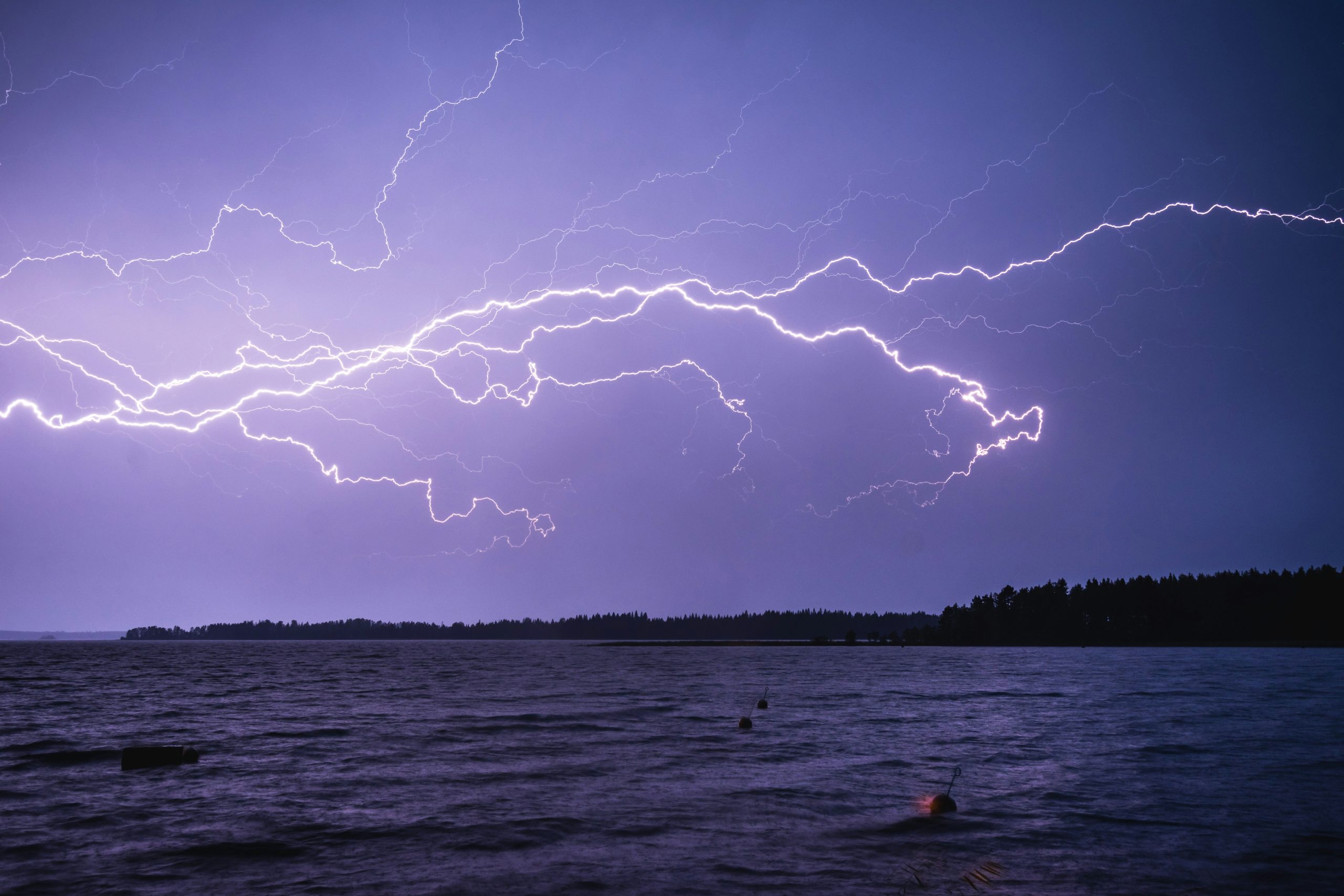
Lightning-powerful, dangerous, highly unpredictable. A direct lightning strike that results only in ringing ears and a few toasted electronics is considered lucky. While the odds of a boat being struck by lightning are only about one out of 1,000 boats, the consequences of a lightning strike call for some strategies to avoid disaster:
Timing
A strategy of boating only on sunny, cloudless days may work well in places like California, but that would mean almost never using the boat in places such as Florida, and much of New England where storms boil up and move in quickly on hot summer days. Boaters should track VHF, Internet and television weather reports and make responsible decisions about whether to go boating depending on the likelihood of storms. Short-term forecasts can actually be fairly good at predicting bigger storms, but small, localized storms might not be reported. This is when knowing how to read the weather yourself can come in handy.
Lightning strikes typically occur in the afternoon. A towering buildup of puffy, cotton-white clouds that rise to the customary flat “anvil” top is a good indication to clear the water and seek shelter — or move out of the storm’s path if possible. That’s if the storm is at least somewhat off in the distance (most storms are about 15 miles in diameter and can build to dangerous levels in fewer than 30 minutes). If lightning and thunder are present, just count the seconds between the lightning and corresponding thunder and then divide by 5 — this will provide a rough estimate of how many miles away the storm is.
When to React
A storm that builds directly overhead might be less obvious until those pretty white clouds that were providing some nice shade moments ago turn a threatening hue of gray as rain dumps on you and the wind starts to howl or, worse yet, boom with thunder and lightning that are right on top of each other. Now is the time for a mad dash to the dock and shelter if close by. Like the National Weather Service says: “When thunder roars, go indoors!” If out on open water or too far from shore and shelter, it’s time to hunker down and ride it out.
If you are Caught
Even though getting caught in a storm is not always avoidable, there’s still plenty that boaters can do to minimize the chance of a strike and lessen injury and damage if there is a strike.
We all learn in grade school that lightning seeks the highest point, and on the water that’s the top of the boat — typically a mast, antenna, fishing rod in a vertical rod holder or even the tallest person in an open boat. If possible, find a protected area out of the wind and drop anchor. If the boat has an enclosed cabin, people should be directed to go inside and stay away from metal objects, electrical outlets and appliances (it’s a good idea to don life jackets too). Lowering antennas, towers, fishing rods and outriggers is also advised, unless they’re part of a designated lightning-protection system.
What Not To Do
Under no circumstances should the VHF radio be used during an electrical storm unless it’s an emergency (handhelds are OK). Be careful not to grab two metal objects, like a metal steering wheel and metal railing — that can be a deadly spot to be if there’s a strike. Some boaters opt to steer with a wooden spoon and keep their other hand in a pocket if forced to man the helm during a storm, while others like to wear rubber gloves for insulation.
An open boat like a runabout is the most dangerous to human life, since you are the highest point and most likely to get hit if the boat is struck. If shore is out of reach, the advice is to drop anchor, remove all metal jewelry, put on life jackets and get low in the center of the boat. Definitely stay out of the water and stow the fishing rods. If all goes well, the storm will blow past or rain itself out in 20 to 30 minutes. It’s best to wait at least 30 minutes until after the last clap of thunder to resume activities.